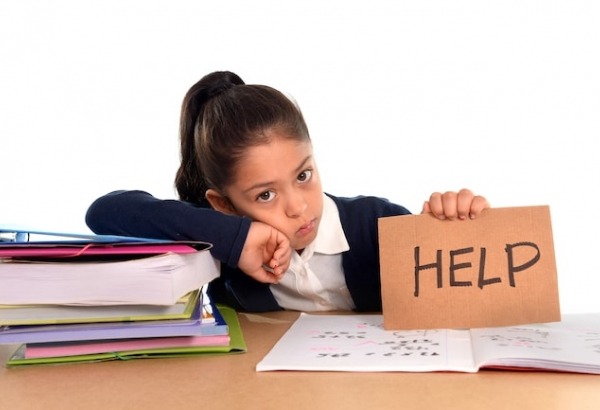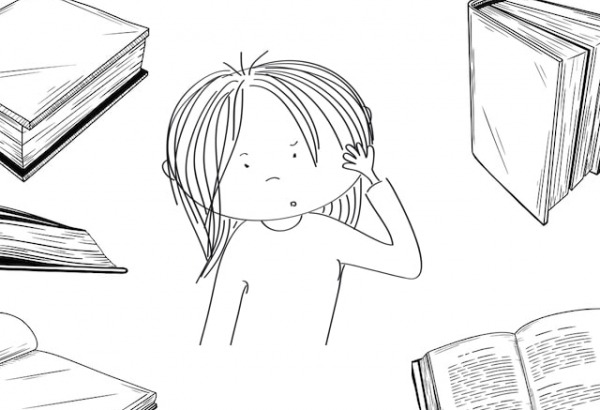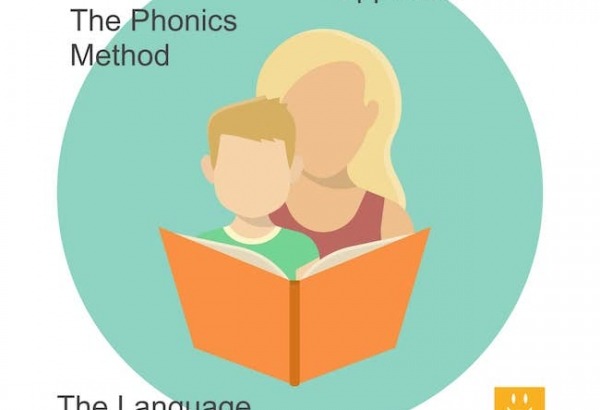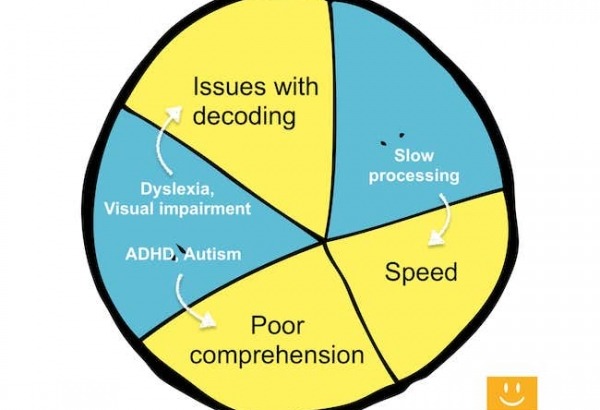A multi-sensory approach to reading

Traditional approaches to teaching reading rely heavily on visual and auditory stimuli, including workbooks and phonics activities. However, children who experience difficulties learning how to read may benefit from a multi-sensory approach that involves physical movements and lets them use their senses to engage on a deeper level.
In particular, dyslexic students who struggle to split words into their component sounds may respond positively to the Orton-Gillingham style of learning. It uses multi-sensory techniques to facilitate acquisition of phonics knowledge, decoding, and sight-reading skills.
Multi-modal learning takes place when our brains process stimuli in a variety of channels, from visual to auditory, kinesthetic and tactile (touch-based) learning. Kinesthetic elements bring in fine and gross motor skills, which can help focus attention. They can also enhance visual and auditory processing. This leads to more integrated knowledge and greater retention. For struggling readers, researchers have observed that input from multiple channels can result in more robust perception and enhanced processing.
In reading and writing this means seeing words on a page, hearing them read aloud, tracing letters in the air and even moving the hands along a keyboard using muscle memory in the fingers to guide spelling. A sensory rich reading curriculum doesn’t just benefit students with learning difficulties and physical impairments. Many children learn better from one modality than the other. When teachers introduce new material using multiple channels, they effectively cater to a wider audience of learners.
Discover more strategies for teaching children with ADHD, autism spectrum disorder, dyslexia, dyspraxia, dysgraphia, slow-processing and visual impairments in these articles.
Developing language skills
The connection between a word’s meaning and label is deeply entrenched in our first language thanks to repeat exposure to rich and stimulating experiences. Whether it is through sight, smell, hearing, taste, or touch, children learn about their world through sensory exploration. Language acquisition happens in context when a child sees water, feels it running over his or her fingertips and hears a parent saying the word.
Learning how to read
Written language is based on spoken language which is composed of different phonemes. These sounds need to be translated into letters during writing and converted from letters back into sounds in reading.
The emphasis on accurate decoding means that oral reading ability has been used to explain 80% of the difference in comprehension rates of a given text. In other words, for a student to understand what they are reading they need to be able to map sounds to letters and decode words.
Visit our posts on teaching children to read, common reading difficulties and phonemic awareness to learn more.
Orton-Gillingham
The Orton-Gillingham approach to reading instruction was developed in the 1930s for students who experienced difficulties in reading and writing tasks yet performed well on intelligence measures. Dr. Orton put together a series of teaching activities that utilized both left and right-brain functions.
The left-brain is traditionally associated with verbal, auditory and sequential learning whereas the right brain holds more creative, artistic and emotional knowledge. Dr. Gillingham added a focus on teaching common English morphemes and phonics training.
The approach was multi-sensory in that students would see a letter, trace it with their fingers and say the sound at the same time. Learn more about the Orton-Gillingham approach.

3 Multi-sensory reading activities
-
Visually stimulating alphabet activities.
Alphabet books sometimes present letters using illustrated shapes. For example if the name of an animal begins with a particular letter, there may be an ‘s’ designed as a snake. This makes it easier for the child to connect the sound with the letter and remember it. Many children have their names spelled out in this visually engaging way but there is no reason why teachers can’t create posters or rearrange a set of illustrated letters to form more words and reinforce basic vocabulary learning.For students who are visual learners, seeing a colorful and semantically loaded display can be a great aid for spelling. Teachers might also want to get a set of magnetic or felt letters. You could even try alphabet cereal to involve taste and smell in the activity!
TIP: Wondering which set of letters you should be teaching? Many parents and teachers struggle with the question of whether or not to teach capital or lower-case letters first. There are actually measurable differences in the way humans perceive each type of letter.
-
Tactile and kinesthetic letter shaping.
Some struggling readers have difficulty forming associations between letters and the sounds they represent. This is further complicated by the fact that English letters and letter combinations often map to more than one sound. In order to reinforce grapheme (letter) and phoneme (sound) mapping teachers can have students practice forming letters using materials that engage their sense of touch.Get them to trace a letter in sand, water or finger-paint. You can also try having them trace letters in the air or on the palms of their hands. Students should say the sound(s) the letter stands for at the same time. Another option is teaching students how to sign the alphabet.
-
Rhythm and pace-setting audio components.
Teachers can help students with decoding by tapping out the syllables in words with their fingers or using a pencil. For reading fluency issues, setting up a metronome to encourage students to read at a consistent pace may be helpful. This is up to the individual reader however, as some students find this very distracting and some will not respond well to the pressure this may impose. You may also try playing classical music while teaching. This has been used to facilitate foreign language learning and retention.

Touch-typing and literacy skills
Touch-typing is a multi-sensory experience given you see the words on the screen, feel your way through the keys and hear the rhythm of the tapping as you make your way through a sentence. More powerful still is the act of learning how to type. That’s because it involves re-learning the alphabet with a tactile and kinesthetic component.
Depending on the program, this can be achieved in a multi-sensory way when a letter or word is read aloud, displayed on the screen and typed by the individual who moves their fingers to touch the correct key(s). It may also help for the student to read the word aloud. Typing is becoming an increasingly important skill for students as secondary teachers require written work to be typed and more and more standardized exams are taken on a computer.
Touch-type Read and Spell takes a multi-sensory approach to teaching keyboarding that reinforces literacy skills and supports decoding and sight-reading. The course uses an Orton-Gillingham informed curriculum to build knowledge of English spelling gradually through a series of individual lessons.
Modules can be repeated as many times as is necessary to master the material. This encourages self-directed learning, allowing students to move through the course at their own pace and fostering enhanced self-esteem and confidence. It can also improve motivation to learn in other areas of the curriculum.
Learn more about the benefits of touch-typing, teaching kids to type, why schools should teach typing and touch-typing for dyslexics in these articles.
Chris Freeman
TTRS has a solution for you
An award-winning, multi-sensory course that teaches typing, reading and spelling

How does TTRS work?
Developed in line with language and education research
Teaches typing using a multi-sensory approach
The course is modular in design and easy to navigate
Includes school and personal interest subjects
Positive feedback and positive reinforcement
Reporting features help you monitor usage and progress













